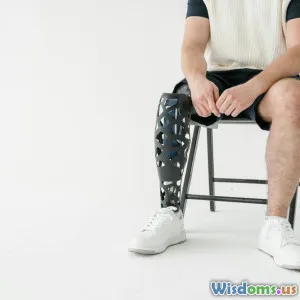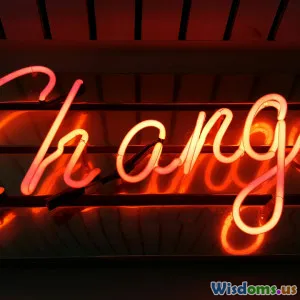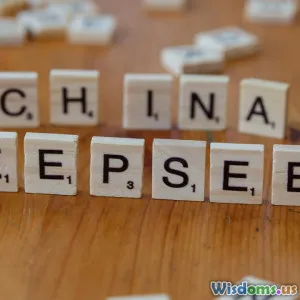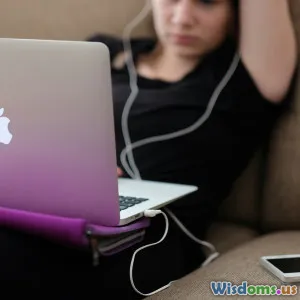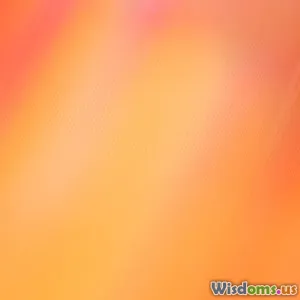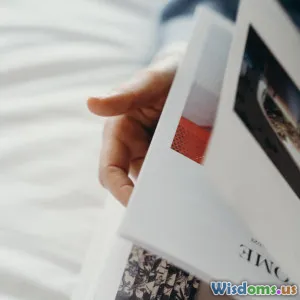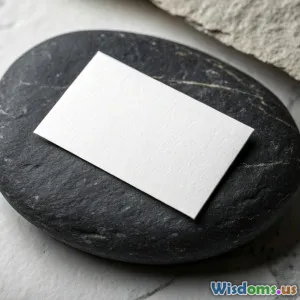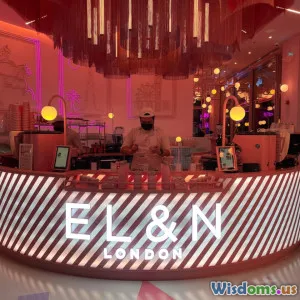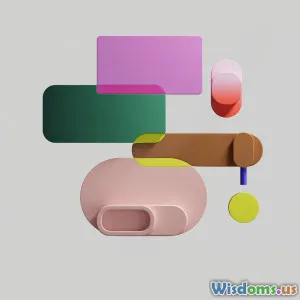
The Intersection of Art and Technology in Design
7 min read Explore how art and technology blend to transform graphic design, fueling creativity and innovation in modern design practices. (0 Reviews)
The Intersection of Art and Technology in Design
In a world increasingly shaped by rapid digital tools and evolving creative expression, the fusion of art and technology has become a powerful catalyst within graphic design. This intersection is redefining what creativity means and how designers bring ideas to life.
Introduction
Imagine a space where the brushstroke of a painter meets the precision of a coder, where aesthetics and algorithms blend seamlessly. This is the evolving landscape of graphic design—a field that once relied solely on manual skills but now dances harmoniously with cutting-edge technology. The convergence of art and technology not only augments creativity but also opens new frontiers for expression, experimentation, and innovation.
Many traditional boundaries have faded, replaced by a collaborative dance of human intuition and technological prowess. So, what does it really mean for artists and designers today? Let’s explore how this intersection inspires novel design experiences, what tools drive this transformation, and why embracing this synergy is crucial for future creativity.
The Evolution of Graphic Design: Bridging Art and Technology
Historically, graphic design was grounded in hand-drawn sketches, print media, and manual composition. The invention of personal computers and software like Adobe Photoshop and Illustrator inaugurated a seismic shift. However, the evolution didn’t stop there. Today’s landscape is peppered with AI-assisted design, virtual reality (VR), generative art, and advanced motion graphics.
Digital Tools as Artistic Mediums
Software tools such as Adobe Creative Cloud have become the 'paintbrushes' of the digital age. Take the rise of Adobe Fresco, enabling designers to simulate natural painting techniques using a stylus on tablets or touchscreen devices — merging tactile artistry with digital flexibility.
In addition, platforms like Procreate empower illustrators to craft fully digital pieces with nuances imitating traditional media picks like pencils, watercolors, and inks. This technological embrace has made high-quality design accessible beyond studios, fostering inclusivity for freelancers, hobbyists, and educators worldwide.
AI and Automation Empowering Creativity
Artificial intelligence (AI) is arguably the most revolutionary force at this intersection. Tools like DeepArt and DALL·E open imaginative doors—transforming text prompts into vivid visuals or applying artistic styles to photographs instantly.
For instance, Pinterest’s “Lens” feature uses AI for design inspiration and image recognition, helping designers source contextual ideas quickly. Similarly, Adobe Sensei integrates AI to automate repetitive tasks, letting designers dedicate more time to conceptual development than mundane corrections.
Real-world Impact: Technology Advancing Artistic Expression
Case Study: Generative Design in Branding
Firms like Airbnb have successfully utilized generative art in crafting their logos. Airbnb’s Bélo symbol was developed using algorithmic iterations driven by designer input and audience testing, ensuring the final mark is both emotionally resonant and scalable.
This precision-driven approach allows adaptations suited for diverse platforms—from mobile devices to billboards—without losing artistic integrity.
Augmented and Virtual Reality transforming User Experience
AR and VR technology are unlocking immersive environments enhancing graphic design’s storytelling aspect. For example, IKEA’s AR app lets users visualize furniture in their homes before purchase, creating a multi-dimensional design experience.
This blend opens new horizons for experiential advertising and interactive graphics, pushing creativity beyond static images.
Collaborative Platforms Revolutionizing Processes
Cloud-based tools such as Figma and Miro allow designers and stakeholders to work synchronously. These technologies foster iterative creativity, blending multiple perspectives in real time, ultimately producing holistic and innovative outcomes.
Challenges at the Crossroad
While marrying art and technology bears tremendous potential, it introduces its own set of challenges:
-
Overdependence on technology: Some designers worry that automation can stifle original creativity if overused without thoughtful input.
-
Accessibility gaps: Advanced tools may require steep learning curves or costly hardware, potentially alienating emerging artists in underserved communities.
-
Preserving the human touch: Maintaining the subjective emotional quality of art can be difficult amidst data-driven design decisions.
Navigating these hurdles demands conscientious approaches—balancing technological efficiency with human sensitivity.
Future Perspectives: Toward an Integrated Creative Ecosystem
Looking ahead, the relationship between art and technology will only deepen. Predictive design analytics, smart interfaces, and real-time 3D content generation are just on the horizon. Designers fluent in both artistic principles and technological fluency will be better positioned to lead innovation.
Embracing Lifelong Learning
Continuously updating skills in emerging technologies such as machine learning, 3D modeling, and UX/UI principles will empower creatives to harness this shifting landscape effectively.
Cultivating Ethical Creativity
Incorporating ethical considerations around data usage, inclusive representation, and emotional impact will define responsible and compelling design in the technological age.
Conclusion
The intersection of art and technology in graphic design is more than a trend—it represents a fundamental transformation in creative practice. Through this synergy, designers gain amplified tools to articulate visionary ideas, enabling designs that are responsive, immersive, and deeply engaging.
Rather than viewing technology as a mere utility, embracing it as a co-creator opens untapped potential for innovation and artistic expression. As graphic designers navigate this ever-evolving terrain, those who blend intuition with algorithmic insight will craft experiences that truly resonate and inspire.
The future of graphic design shines brightest where creativity meets code—showing us that, at its core, art and technology are not opposing forces but partners in creation.
Rate the Post
User Reviews
Popular Posts











